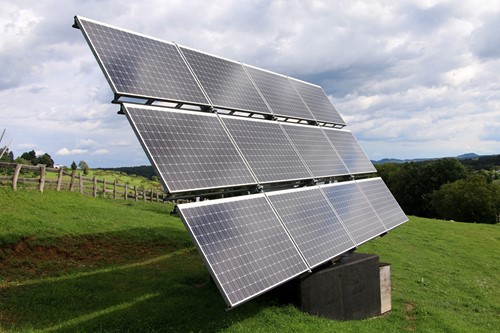
According to data generated by the U.S. Energy Information Administration (EIA), the average monthly electric bill increased from to $115 monthly even though usage has steadily declined during the last 10 years. The hard data compiled in 2019 shows that some states enjoy monthly utility bills as low as $76 while others suffer costs as high as $168. The rising cost of municipal water only exacerbates the issue. That’s why residential property owners continue to look for ways to reduce reliance on municipal water and electricity. The following often prove viable solutions.
Upgrading to larger and more energy-efficient windows ranks among the better home improvements in terms of return on investment.
The federal government has consistently renewed tax credits for homeowners who install energy-efficient windows. Along with improved property values and enhanced views, the increase in natural light reduces the need to turn on lights during the day. Property owners who wish to infuse natural light on a grander scale may want to consider skylights.
It’s not uncommon for homeowners to hesitate to install rooftop solar panels. The idea that contractors drill, fasten and nail structures to the roof typically makes them uneasy. A water penetration can result in expensive damage and prompt hazardous mold growths.
One of the viable solutions to roof panels involves leveraging commercial systems. The vast solar fields seen in open areas use a higher grade of panel and electrical setup. According to solar panel experts, a common residential solar panel possesses 72 cells and measures 65 inches by 39 inches. By contrast, a commercial solar panel system enjoys 96 cells and measures 78 inches by 39 inches most times. The increased bandwidth of a commercial solar panel system could generate enough power to end municipal grid reliance.
The increased demand for clean drinking water resulted in higher costs over the last decade. With the average family paying upwards of $1,000 annually for municipal water, private wells remain a cost-effective solution.
It’s essential for property owners to strongly consider working with a professional well installation outfit when getting off municipal water. A wide range of building, zoning and health regulations may be triggered. But the upfront cost of digging a private well can effectively end reliance and save money every month going forward.
Homeowners generally embrace the idea of making strategic improvements that save money over the long haul. But the increased feeling of independence proves priceless.

For over 11 years, I have been following my passion of helping people find their dream homes and sell them when the time is right. First time home buyers, growing families, empty nesters looking to downsize. I guide my clients every step of the way, from initial consultation through final closing. By bringing an experienced eye and a fresh approach to every situation, I work diligently with each client to smooth the process and make it as stress-free as possible.
Fair representation, respect and integrity. Clear communication and detailed coordination. A commitment to putting my clients' needs first. These are the practices and values my clients expect and enjoy.
I also work with a wide network of trusted experts in financing, legal assistance, home inspections, evaluation and interior design. Everyone has the same high expectation of providing the utmost service through close communication and coordination to get our client to the end goal of selling or moving into their dream home!
Outside of real estate, I have a deep passion for travel. My husband and I have been fortunate to explore many incredible destinations around the world, and we always look forward to planning our next adventure. I also find joy in gardening and flower arranging—my personal ‘Zen moments’—as well as reading, practicing Pilates and spending time with my family!